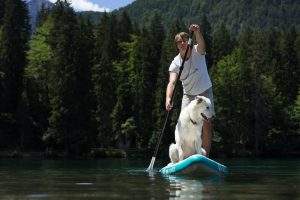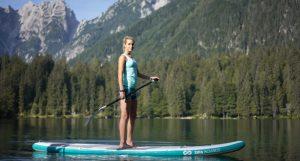Reaching new horizons is one of SipaBoards’ aspirations and something that drives us both when we develop our boards as when we’re exploring with them. We’re proud that we have ambassadors out there who share our mindscape and live out their wildest adventures with us. This time, Marin Medak is taking us to the majestic Vipava River, meandering through picturesque Slovenia landscapes and enriching the region with its crystal-clear waters and breathtaking vistas.
Meet Marin: The e-SUP(er) explorer
Marin Medak is a bit hard to categorise, as his interests and endeavours shift from exploration to entrepreneurship, but when it comes to adventure, he’s the guy that goes further. And that means that he already has over 10.000 kilometres behind him, having rowed across the Atlantic, criss-crossing through the Adriatic and being a frequent kayaker and stand up paddler on Slovenian rivers.
What most of us would plan as the SUP-trip of the year, Marin takes as a Sunday stroll when he descends the Vipava River on the SipaBoards Tourer Drive.
Down the green Vipava
One of the hidden Slovenian gems, the endemic Karst Vipava river cuts through the namesake valley, leaving vineyards on one side and high plateaus on the other.
WATCH THE VIDEO
4 Essential tips on river paddling
1. Start upstream and return downstream when possible
River paddling is most times a one-way affair, paddling downstream from one point to another. Electric standup paddle boards changed that and slow rivers are now accessible on round trips as well. But mind, that you have a limited amount of energy and paddle against the current when you’re fresh and then use the current on your way back to the same spot.
2. Be mindful of the wind.
Winds can help or hinder and you should account for windforce when you’re going on a longer ride to save energy. Going downstream and upwind, can be just as tiresome as paddling upstream.
3. Always wear a leash, but …
Safety leash should always be fastened around your ankle, knee our waist. But with rivers, currents and swirls can make up for dangerous situations. You should always consider a quick-release mechanism, to also be able to detach from your board if it gets tangled or pulled underwater.
4. Start out fully powered
A river can be physically more intensive and you need to go out well rested and equipped. Pack enough food & water and make sure your electric SUP has a full battery (or even a spare) and set out to discover something new!
Too much can never be too much when it comes to SUP safety. You should always consider your capabilities, your surroundings and your equipment before venturing out. Check your gear, fill your batteries, enjoy your paddle and get back safe!
For more tips, the editorial experts at SUP Connect have covered each aspect into further detail. Check out this extensive article from here.






